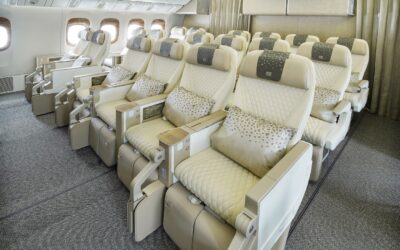
Second-quarter managed corporate revenue at Alaska Air Group carriers, including Alaska Airlines and Hawaiian Airlines, declined 5 percent year over year on softer demand, particularly from large corporate clients, executives said during a Thursday earnings call. However, they noted such demand has begun to recover and has spiked in the past two weeks.
“While large managed corporates, particularly in sectors like manufacturing and technology remain cautious, small and medium businesses continue to demonstrate resilience,” said Alaska chief revenue officer and chief commercial officer Andrew Harrison. Small and midsize enterprise clients helped keep total second-quarter corporate revenue to a 1 percent year-over-year decline, he said.
“Encouragingly, July has seen an uptick in closer in managed corporate bookings, a shift from what we saw in early Q2,” Harrison said. “With greater economic clarity ahead, we’re cautiously optimistic about renewed corporate confidence offering potential upside to corporate travel in our geographies.”
In fact, Harrison said, “when you look at business demand in the last two weeks, it’s been up double-digit volumes and revenue has been up the same.”
Meanwhile, CEO Ben Minicucci said Alaska, which acquired Hawaiian last year, will unveil in August a single loyalty program brand and platform for the two carriers, and remained on track to secure a single operating certificate from the U.S. Federal Aviation Administration in the fourth quarter. The company in May indicated that it would transition Hawaiian to Alaska’s passenger services system, which is powered by Sabre, in the second quarter of 2026.
Alaska Q2 Metrics
Alaska Air Group reported second-quarter passenger revenue of nearly $3.4 billion, up 27 percent year over year. Total operating revenue increased 28 percent to $3.7 billion. The company’s net income was $172 million, compared with net income of $220 million in the second quarter of 2024.
The company’s premium-class revenue increased 5 percent year over year.
Alaska Airlines’ second-quarter capacity as measured in available seat miles declined 1.1 percent year over year, a figure that excludes Hawaiian. (Second-quarter ASMs for Alaska Air Group’s regional carriers increased 8.7 percent.)
Alaska Air Group projected third-quarter capacity to decline about 1 percent year over year and full-year capacity to increase about 2 percent.
RELATED: Alaska Q1 performance



Recent Comments